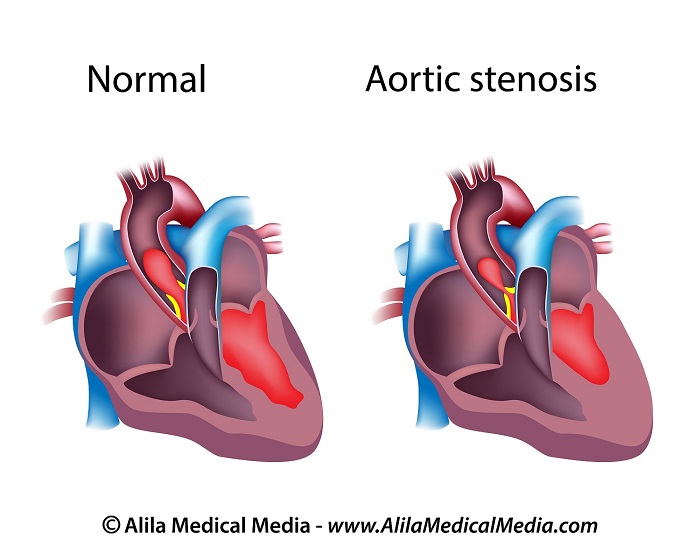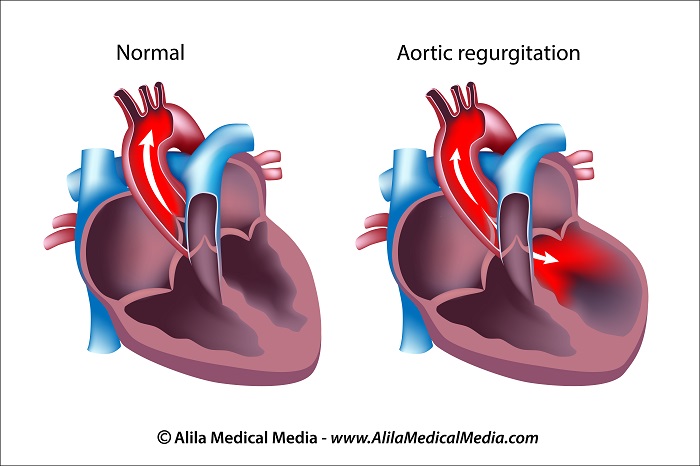Aortic Valve Diseases Explained Clearly
Pathophysiology of Aortic Stenosis and Regurgitation Explained in 4 minutes.
This lesson includes an animated video lecture (with heart sounds/murmurs), downloadable images, quiz questions and a PDF
The aortic valve serves to ensure one-way flow of oxygen-rich blood from the left ventricle to the aorta and to the body. It opens when the left ventricle contracts and pumps blood; and closes when the ventricles refill, to prevent blood from flowing back to the left ventricle.
The aortic valve consists of three leaflets, or cusps.
A defective valve is one that fails to either open or close properly.
Aortic stenosis happens when the aortic valve does not open fully, reducing blood flow. 
Aortic regurgitation, on the other hand, occurs when the valve does not close tightly, causing backward flow to the ventricle.

The common outcome of both situations is that the heart does not pump enough blood to the body, and heart failure may result.
Symptoms may develop suddenly or slowly over decades, and may include: fatigue, shortness of breath, especially when exercising; chest pain or tightness; dizziness, fainting, swelling in the ankles and feet; and poor feeding and growth in children.
Subscribe to one of the courses below to continue!
This content is available within the following courses:

Basic Fundamentals of Cardiology: 40 animations, plus downloadable PDFs, downloadable images, and quizzes.

Basic Fundamentals of Cardiology: 40 animations, plus downloadable PDFs, downloadable images, and quizzes.